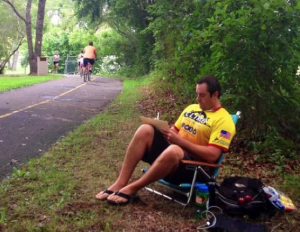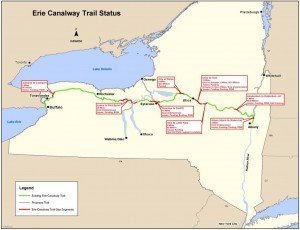 Parks & Trails New York, the statewide advocacy organization that works to expand, protect and promote a network of parks, trails and open spaces throughout New York State has issued the following press release regarding the closing of 55 state parks and historic sites:
Parks & Trails New York, the statewide advocacy organization that works to expand, protect and promote a network of parks, trails and open spaces throughout New York State has issued the following press release regarding the closing of 55 state parks and historic sites:
At a meeting of the Senate Committee on Cultural Affairs, Tourism, Parks and Recreation today, Parks Commissioner Carol Ash told Committee members her agency is going ahead with plans to close 55 parks and historic sites, and curtail programming and services at an additional 22, unless sufficient funding is restored to the budget of the Office of Parks, Recreation and Historic Preservation in the final state budget.
Commissioner Ash said, “Given that there is no final state budget at this time, our agency has neither funding nor authorization to open the 55 State Parks and Historic Sites that were identified for closing.”
State Parks needs $6.3 million to keep open the 55 parks. The fate of an additional 52 parks and historic sites, 34 tagged for closing and 18 for service reductions, is tied to a $5 million Environmental Protection Fund appropriation in the executive budget.
In total, State Parks needs $11.3 million to prevent any park or historic site from closing. In their budget proposals, the Senate and Assembly have committed to keeping all NYS parks and historic sites open this season.
“We’re deeply grateful to the Senate and Assembly for their commitment to restore $11.3 million in park operating funds, which will allow all state parks and historic sites to remain open,” said Robin Dropkin, Parks & Trails New York Executive Director. “Legislators, and hopefully now the Governor, understand how critically important parks are to New Yorkers and how cutting parks makes no sense in terms of the economy, quality of life or citizen morale.”
“We’re alarmed that the late budget is putting parks in limbo. Will the 55 parks and historic sites slated to close ever be able to open this year? By the time the budget is passed will there be enough time for the parks agency to get the facilities ready for the season? What if the budget doesn’t pass until June?” questioned Dropkin.
“Should agreement on the final state budget continue to be delayed, the Governor and Legislature need to come up with an immediate solution to keep state parks open and accessible to the public,” said Dropkin.
Every dollar invested in state parks and historic sites generates $5 in economic activity for the surrounding communities. In 2008, state parks and historic sites generated $1.9 billion in annual economic activity, including supporting 20,000 long-term sustainable non-parks jobs that generate tax revenues far above the amount of the proposed cuts.
The system’s 178 state parks and 35 historic sites, encompassing 325,000 acres of land and water from Montauk to the Thousand Islands and Niagara Falls, collectively draw more than 56 million visitors a year, 40 percent of whom come from outside the immediate area.
In the 125 years since Niagara Falls State Park became the first state park in the nation, New York State has never closed a park, not even in the depths of the Great Depression. Parks and historic sites on the governor’s hit list for closure affect every region of the state, from Orient Beach State Park at the tip of Long Island’s North Fork to Wilson-Tuscarora State Park in Niagara County.
Patronage of parks and historic sites has been increasing each year, especially as the current recession leads financially strapped New Yorkers to seek recreational opportunities closer to home.
“It is incumbent upon legislators and the Governor during budget negotiations to restore $11.3 million, a mere four-thousandths of one percent of the state budget, to the parks budget to keep our unparalleled system of parks and historic sites open and accessible to the people of New York,” said Dropkin.
Ed. – New York History reported on the potential for these closings in February.
 Parks &- Trails New York, the New York State Trails Council, and the New York State Office of Parks, Recreation, and Historic Preservation have announced the results of a New York State Trail User Count. The study focused on 14 of the state’s greenway or multi-use trails where volunteers conducted user counts this past August. Based on the results of these counts it is estimated that over 2.2 million cyclists and pedestrians are using these trails each year.
Parks &- Trails New York, the New York State Trails Council, and the New York State Office of Parks, Recreation, and Historic Preservation have announced the results of a New York State Trail User Count. The study focused on 14 of the state’s greenway or multi-use trails where volunteers conducted user counts this past August. Based on the results of these counts it is estimated that over 2.2 million cyclists and pedestrians are using these trails each year.



